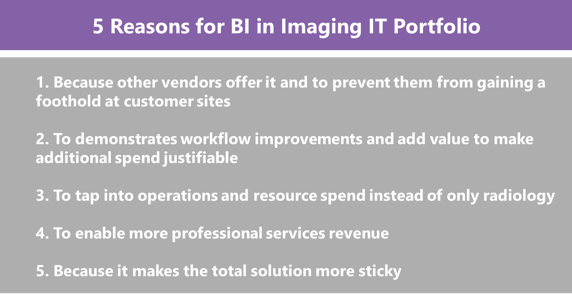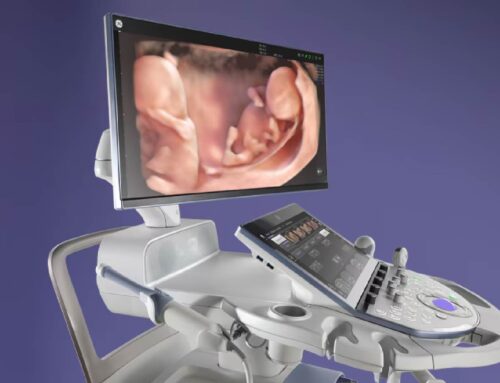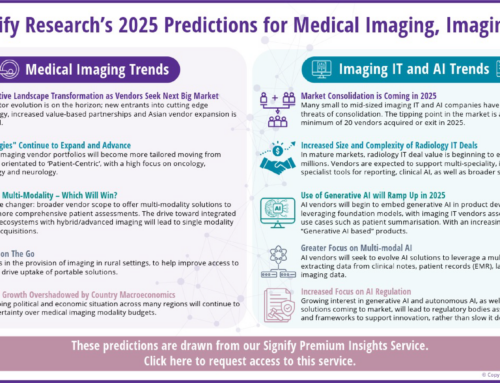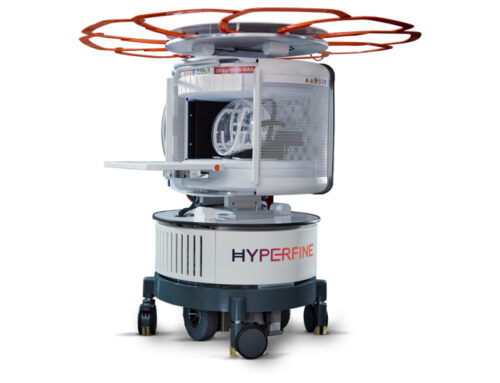Radiology Business Intelligence Seeing Increasing Demand:
A new generation of radiology focused business intelligence solutions are entering the market. Although general business intelligence tools and homebrew solutions have been used by healthcare providers for the last 10 years or more, especially in the larger hospital segment, the new business Intelligence and analytics tools are intended to provide more radiology and modality focused analytics to help improve departmental performance and profitability.
The new generation of radiology focused business intelligence solutions offer standardised toolsets with common KPIs and easy access to customisable radiology and modality focused analytics. This can involve pulling out data on departmental performance, equipment downtime, use of a particular application or protocol, identification of bottlenecks and anomalies, monitoring and streamlining patient flow, workflow efficiency and system behaviour, and creation of reports with desired metrics.
For imaging IT vendors with a broader product portfolio, a substantial value-add comes from the interplay between business intelligence modules and workflow orchestration. The business intelligence products from these vendors are becoming tightly associated with the operational workflow modules, using the same input data sources for analytics adding an extra layer on top of the workflow orchestration module, and further guiding and improving the workflow through insights, recommendations and increasingly automated workflow control.
Although the operational workflow and radiology business intelligence markets are still at a very nascent stage with a total market size of USD 112.1m in 2018, we are expecting this market to grow at 18.7% CAGR until 2023 (see Imaging IT: Operational & Workflow Tools Market Report – 2019 for more details).
Why are Vendors Focusing on Business Intelligence Solutions?
In recent years, imaging IT vendors have been developing business intelligence modules or acquiring best-of-breed vendors to incorporate their modules into their solutions. But it is not only the high growth expectations in this market that are motivating the vendors; the considerations are much more strategic and relate to their competitive position and wider product portfolio. Here, we are discussing 5 of the top reasons business intelligence solutions are getting so much attention:

- Because other vendors have it
A motivation for having business intelligence in the portfolio is often defensive for many vendors; to prevent installation of a competitor business intelligence solution which could lead to loss of broader imaging IT revenue. Imaging IT platform vendors often try to serve as many customer needs as possible, either by having the solution available themselves, or by having it optional through partnerships. Not having business intelligence in the product portfolio could lead to missed revenue if the customer has the need for such a product, but it could also lead to other vendors entering the customer site with a business intelligence solution and using it as an argument to replace other imaging IT components from the incumbent vendor. - To demonstrate potential workflow improvements
For many vendors the focus of these solutions is on demonstrating potential workflow improvements, sometimes only achievable by replacing some of the additional imaging IT software. The business intelligence vendor would then typically install their solution at a competitor site or a site with imaging IT components from a competitor, use the solution to recommend optimisations and use it to communicate further optimisations achievable by replacing competitor components in the workflow. - To tap into other budgets
The improvements and added value in terms of easily customisable analytics and dashboarding, makes an additional spend justifiable by tapping into operations and resource budgets instead of core radiology. The value add of these solutions can be expected to drive overall growth in the market. For many vendors a crucial motivation for entering the business intelligence field is the possibility to generate additional revenue from budgets outside core radiology. - Professional services revenue potential
An important aspect of business intelligence solutions is that it often gives the opportunity to obtain additional professional services revenue. Professional services are a reasonable proportion of the overall imaging IT revenue in this market, and many vendors highlight this is a crucial component in their offering in the business intelligence space. Moreover, it is also an opportunity to create additional revenue, especially if the initial software revenue coming from business intelligence solutions is minimal due to the go-to-market strategy. - Makes the solution more “sticky”
A long-term goal for enterprise imaging vendors with business intelligence modules is the possibility of making the total imaging IT solution more entrenched with their customers, offering not only image management and diagnostic tools, but also helping to secure and improve the profitability of the healthcare provider’s business. The more functions one vendor can support under the same agreement, the harder it will be for competitors to bid on individual components. So, increasing the breadth of solutions and being responsible for as many core functions as possible will improve customer retention. This is further enhanced by additional professional services, making the vendor more of a partner for optimising departmental and hospital performance, as opposed to a provider of software or hardware components.
But Will it Affect the Bottom Line?
One critical question is however, to what extent these solutions will lead to net-new revenue? Is the focus on price, especially considering increasing procurement networks and larger deal sizes, going to swallow up any potential additional revenue from business intelligence solutions? The answer to this will largely depend on the solutions being made available to the market and the individual vendor offering.
Due to the tight connection between operational workflow modules and enterprise imaging solutions, we can expect operational workflow to some extent to merge with enterprise imaging as deals are increasingly bundled and the workflow orchestrator becomes an integrated component. There will be some standalone upgrades as we currently see in the market but looking further ahead the two markets will likely consolidate.
Business intelligence solutions are expected to remain separate for longer as a proportion of the industry will be offering these on a vendor neutral basis and entry point at competitor sites. The percentage of revenue from professional services will continue to be high as vendors see this as an essential part of their value-add and interaction with the customer, adding to the profile of an advisor in addition to software vendor.
As is evident from our forecast, we predict that there is some new revenue opportunity possible, with global revenues increasing to USD 293.5m by 2023. However, what is less clear is if this is a brand-new revenue stream, or merely a cannibalisation of the broader imaging IT spend that has traditionally gone on PACS and RIS. When viewed in context of our outlook for broader imaging IT, which in many cases sees a gradual decrease in market revenues, it is possible to suggest that some of this decline will be offset by spend on operational workflow tools and business intelligence with a “net-neutral” effect. However, when it comes to more mature and advanced operational workflow and business intelligence tools, we do see net-new revenue growth opportunity, exemplified in our forecast. In terms of which scenarios net-new revenue growth is most likely, we suggest the following situations:
- Sale of add-on modules for operational workflow tools as part of a wider professional services agreement, usually into an acute provider focused on pursuing an enterprise radiology or enterprise imaging strategy
- Mature business intelligence tools for large and mid-size acute hospitals with multiple sites with limited resources for self-development of BI tools
- In the mid-term, as a vehicle to support or drive vendors towards risk-sharing contracting deals, mostly based on operational outcome measurement combined with professional services and/or a managed service business model
So, although the size of this market will likely remain relatively small compared to the overall imaging IT market, and it will be hard to make additional profit with most standard solutions, business intelligence is becoming an important part of the overall strategy of imaging IT vendors. We can therefore expect continued focus on these solutions from the vendors, not only in an attempt to gain additional revenue from healthcare providers by diversifying into operations management, but perhaps even more importantly, to remain competitive in today’s struggling imaging IT market.
Related Market Report
“Imaging IT: Operational and Workflow Tools – World – 2019” provides a highly detailed, data-centric analysis of the world market for Workflow Orchestration and Business Intelligence. Key features include trend analysis, market size estimates, annual growth rate forecasts for 2018 to 2023 and vendor market share analysis.
About Signify Research
Signify Research is an independent supplier of market intelligence and consultancy to the global healthcare technology industry. Our major coverage areas are Healthcare IT, Medical Imaging and Digital Health. Our clients include technology vendors, healthcare providers and payers, management consultants and investors. Signify Research is headquartered in Cranfield, UK. To find out more: enquiries@signifyresearch.net, T: +44 (0) 1234 436 150, www.signifyresearch.net
About The Author
Dr. Ulrik Kristensen is a Senior Market Analyst at Signify Research with 8 years’ experience from the healthtech industry. Ulrik is part of the Healthcare IT team and leads the research covering advanced visualisation, imaging IT, business intelligence and genomics markets. Ulrik holds a MSc in Molecular Biology from Aarhus University and a PhD from University of Strasbourg. He can be reached at ulrik.kristensen@signifyresearch.net.












